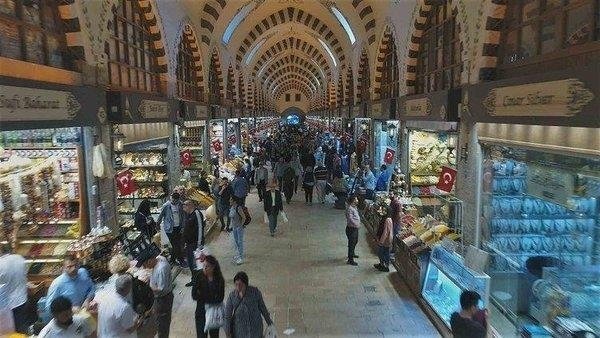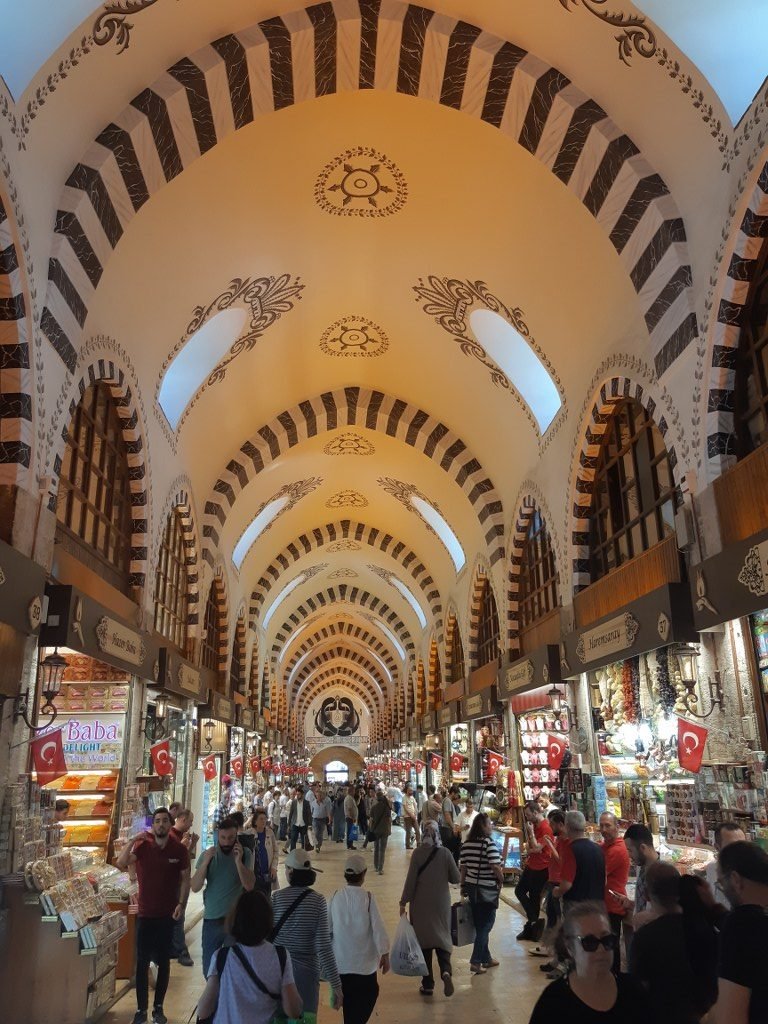The first place that comes to mind when visiting Istanbul is the Grand Bazaar (also known as the Covered Bazaar). You could come to Istanbul just to shop.

We certainly have to start with the Grand Bazaar in the old city. This labyrinth of streets and passages houses more than 3000 shops in which 4,000 employees work, 21 doors, 80 streets, 7 fountains.
Each type of seller has a street that bears its name such as: jewelers street, carpet makers street, scarf seller street, furriers street etc. Thousands of shops sell countless objects from all over the world. This bazaar still remains in the center of the old city, affordable for all budgets and tastes. Turkish craftsmanship offers a set of enchanting gifts and souvenirs; famous carpets, splendid hand-painted ceramics, copper and brass objects, sea foam pipes. The gold jewels in their well-lit chests dazzle passers-by.
In the Ottoman period, the Grand Bazaar was not only a center of shopping and commerce but also a center of finance and a place where the economy was discussed. Most likely, in those days its streets smelled of spices, fabrics, leather and wood. When Istanbul became important as a tourist center, the Grand Bazaar also became a center of interest for tourists.
Spice Bazaar was built in 1664 to finance the expenses of the Mother Sultana Mosque. Inside the market there are about 130 shops, the 6 doors of the market give access from different directions.
In the Ottoman period, spices from Egypt and the east of the Ottoman Empire were sold in this market. Here you can buy different types of spices and herbs already packaged or dissolved in addition to these, cheeses, dried meat, jams, honey, pistachios, sweets and perfumes in small bottles that are among the specialties of the market.
The atmosphere of this market is much more oriental than that of the Grand Bazaar.
The Tahtakale area, located behind the Spice Market, looks like another world with vendors and street stalls. Aphrodisiacs, electronic items, perfumes, toys, souvenirs etc. can be found on these stalls. Tahtakale has been witnessing an extremely active commercial life today. As one of the few districts in Istanbul where the oldest street texture is well preserved, an intricate traffic of vehicles and people can be seen on most of its slopes and narrow streets. The district, which was famous for its unofficial foreign exchange transactions before 1980, gave rise to the term Tahtakale Stock Exchange, but it lost this feature with the lifting of the ban on foreign exchange transactions since the mid-1980s.












RECENT COMMENTS